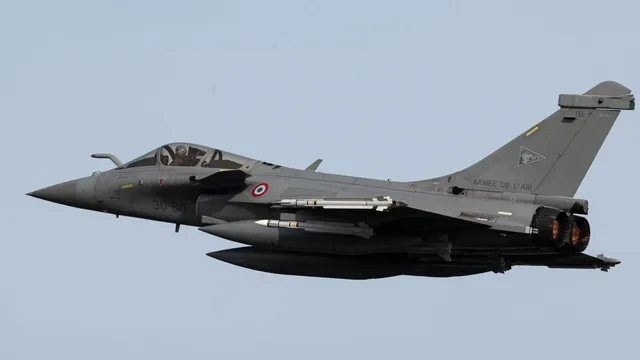
India admits to losses in recent air conflict with Pakistan
2025-05-31 12:16- The conflict began after India targeted militant hideouts in Pakistan in April 2023 following a deadly terror attack.
- Both countries engaged in significant aerial combat with reported losses on both sides, including aircraft.
- Military leaders from both nations affirm that no nuclear threat was posed during the conflict.
Express your sentiment!
Insights
Recent escalations between India and Pakistan have led to a significant military conflict, primarily revolving around the contested region of Kashmir. The tensions escalated after India conducted airstrikes targeting alleged militant hideouts in Pakistan following a deadly terror attack that killed 26 individuals in India-administered Kashmir on April 22, 2023. In response, both nations engaged in aerial combat, involving heavy exchanges of fire and aerial maneuvers not seen since the Second World War. According to reports, over 125 aircraft were utilized in the conflict, thus intensifying the aerial confrontation between the two nations. Pakistan's military asserted that it shot down six Indian jets, including advanced Rafale aircraft, while India has confirmed sustaining losses in the air but chose not to reveal specific numbers. Despite these admissions, the Indian military also claimed that it managed to down several Pakistani fighter jets. However, Pakistan has maintained that it did not lose any planes, although it recognized suffering some damage at its air bases. General Anil Chauhan, India's chief of defense staff, acknowledged the initial losses and articulated the need for tactical adjustments. He characterized the conflict's resolution process, noting that after rectifying their initial tactics, they were able to carry out subsequent strikes deep within Pakistani territory with high accuracy. Both military leaders emphasized that the situation did not pose a nuclear threat, suggesting that rational decisions were made during the conflict. General Chauhan indicated there is ample room for conventional military operations, refuting claims that nuclear considerations were imminent. The ongoing dynamics highlight the fragile nature of peace in the region, where traditional military engagements remain a common practice in the face of severe tensions. This conflict serves as a reminder of the practical challenges faced in the context of Indo-Pak relations, where both nations continue to navigate through a long history of military confrontations and political hostilities. The escalation of hostilities post-strikes demonstrates the precarious balance both nations try to achieve between military action and diplomatic dialogue, all while hinting at a relationship underscored by deep-rooted communal and political tensions.
Contexts
The historical context of the India-Pakistan Kashmir conflict is rooted in the partition of British India in 1947, which led to the creation of two separate nations: India and Pakistan. This division was intended to reflect the religious demographics of the region, with Pakistan intended to be a homeland for Muslims and India being a secular nation. However, the partition led to significant communal violence and mass migrations, creating deep-seated animosities. The princely state of Jammu and Kashmir, with a majority Muslim population but a Hindu ruler, became a contentious issue. The state's accession to India has been the basis of the ongoing conflict as Pakistan claims it, leading to multiple wars and skirmishes between the two nations over the decades. Following the partition, the first Indo-Pakistani War broke out in 1947-1948 as Pakistan sought to annex Kashmir. By the time the United Nations intervened, a ceasefire line was established, resulting in India controlling approximately two-thirds of the territory and Pakistan controlling the remainder, leading to the formation of the Line of Control (LoC). The UN resolution called for a plebiscite to determine the region's fate, but this has never been conducted, as both sides have failed to reach a consensus on the conditions under which it would occur. This unresolved status has perpetuated hostilities and led to a series of conflicts, including the 1965 war and the Kargil conflict in 1999. The Kashmir conflict is further complicated by the strategic interests of both India and Pakistan, as well as involvement from larger geopolitical players like China and the United States. India views its control over Kashmir as integral to its national identity and territorial integrity, while Pakistan considers it a fundamental issue of self-determination for the Kashmiri people. The region is also crucial for water resources that spill into both nations, heightening tensions regarding claims over river systems. Furthermore, the rise of militant movements and cross-border terrorism have exacerbated the conflict, leading to increased military presence and human rights concerns in the region. In recent years, the situation in Kashmir has garnered global attention, especially after the revocation of Article 370 in August 2019, which granted special status to Jammu and Kashmir. This move by the Indian government was met with widespread criticism and protests in the region, as it was seen to undermine the autonomy that Kashmir had enjoyed. The ongoing unrest, combined with the political and military strategies employed by both nations, suggests that without significant diplomatic engagement and a commitment to dialogue, the historical grievances and complex dynamics of the Kashmir conflict will likely continue to fuel tensions between India and Pakistan.